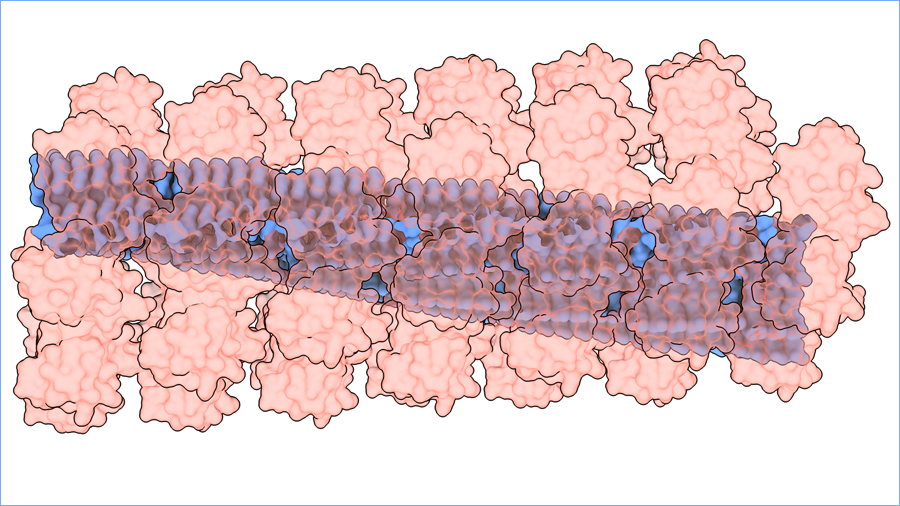New nanomaterial capable of storing and inhibiting SARS-CoV-2
UAB researchers have developed a new protein-based biocompatible nanomaterial capable of selectively capturing and neutralising the SARS-CoV-2 virus. The new structure can be applied as a functional surface coating and its modularity allow it to be adapted to recognise and fight other viruses.

The new biomaterial was developed by the Protein Folding and Computational Diseases research group, directed by Salvador Ventura, researcher from the Department of Biochemistry and Molecular Biology and from the Institute of Biotechnology and Biomedicine (IBB). The study was published in the Journal of Colloid And Interface Science.
The researchers have designed a nanofibril inspired by the structure presented in nature by the amyloid assemblies of Sup35, a yeast protein. To this protein they added, through genetic engineering, two miniproteins (LCB1 and LBC3) capable of binding the SARS-CoV spike protein and blocking its interaction with the cell receptor ACE2, a critical step for the entry of the virus into cells.
"The supramolecular scaffold we have generated spontaneously self-assembles while preserving its structural integrity and functionality and has potent activity to capture and neutralise SARS-CoV-2, with an efficacy comparable or superior to that of therapeutic antibodies," says Salvador Ventura.
The research team demonstrated the functionality of nanofibrils as biocompatible surface coatings in wet environments in a proof-of-concept test in which they were embedded in a polymeric material.
According to the researchers, the applications of the new nanomaterial are wide-ranging. It could be used to contain the spread of the virus and increase the safety of personal protective equipment. It could also be used to replace antibodies in existing tests, since it has a lower production cost, to concentrate and isolate viral particles in individual tests or environmental sampling.
Another advantage of nanofibrils is their modular design, which allows them to be easily adapted to recognise and neutralise other types of viruses by changing the miniproteins in the structure. This opens up a wide range of possibilities for the development of new surfaces with antiviral properties.
Two years ago, the IBB-UAB research group developed a first generation of nanomaterials with a similar principle to the one applied in this study. The nanofibrils designed now have different properties and morphology, which demonstrates "the great potential of structures based on genetically modified amyloids to develop innovative solutions in biotechnology and biomedicine," concludes Salvador Ventura.
Original article: Molood Behbahanipour, Susanna Navarro, Oriol Bárcenas, Javier Garcia-Pardo, Salvador Ventura. Bioengineered self-assembled nanofibrils for high-affinity SARS-CoV-2 capture and neutralization. Journal of Colloid and Interface Science. https://doi.org/10.1016/j.jcis.2024.06.175.